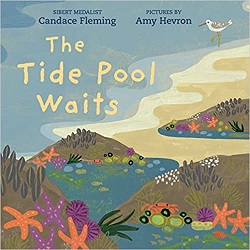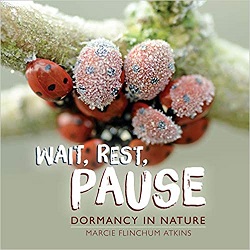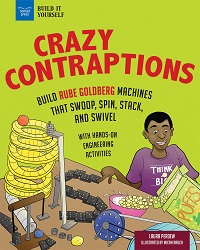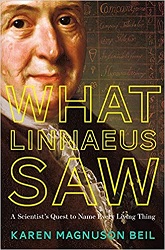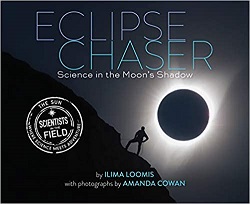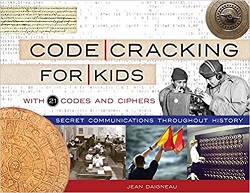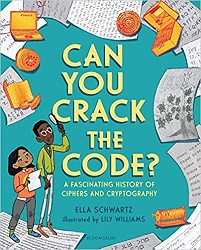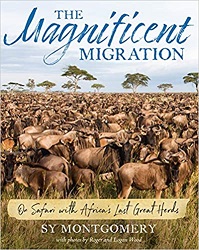Review of The Tide Pool Waits, by Candace Fleming, pictures by Amy Hevron
by Candace Fleming
pictures by Amy Hevron
Neal Porter Books (Holiday House), 2022. 40 pages.
Review written May 27, 2022, from a library book
Starred Review
The Tide Pool Waits is a beautifully simple picture book about a complex scientific topic. I learned things I didn’t know about tide pools, and it was presented in a way that even small children can understand.
The main text is simple. We meet many different kind of creatures in the tide pool. After each one is presented, we see the words, “They wait.”
Here’s the last group:
There are others, too.
Under rocks.
In the tangle of floating, fanning seaweed.
Beneath the sand and between patches of sponge.They all wait.
And wait.
And wait.
But then the waves crash! They wait for just the right time to sweep over the shore.
They surge over barnacles, mussels, and snails,
stir the tangle of seaweed,
shake the crevice-cracked rocks,
rise higher and higher and higher until . . .the pool is part
of the sea once more.The tide has come.
The wait is over.
Then the book looks at those same creatures we already met, and we see that they do different things now that the tide has come in. Sea anemones bloom, barnacles open their shells and eat, various animals hunt, and some return to the open sea.
There’s a flurry of activity until the tide goes out again.
At the back of the book, there’s “An Illustrated Guide to This Tide Pool.” We learn more about the specific animals featured and their place in the tide pool and how their behavior changes when the tide is in or out. There’s even an illustration on the last page showing which creatures live in which zone of the tide pool — where different zones get different amounts of water.
So the main text is simple language, suitable for storytime. But the back matter fills out the information for curious older readers like me. The illustration style is bold and simple — and does make the different creatures easy to distinguish.
A marvelous beginning science picture book.
Find this review on Sonderbooks at: www.sonderbooks.com/Childrens_Nonfiction/tide_pool_waits.html
Disclosure: I am an Amazon Affiliate, and will earn a small percentage if you order a book on Amazon after clicking through from my site.
Disclaimer: I am a professional librarian, but the views expressed are solely my own, and in no way represent the official views of my employer or of any committee or group of which I am part.
What did you think of this book?
